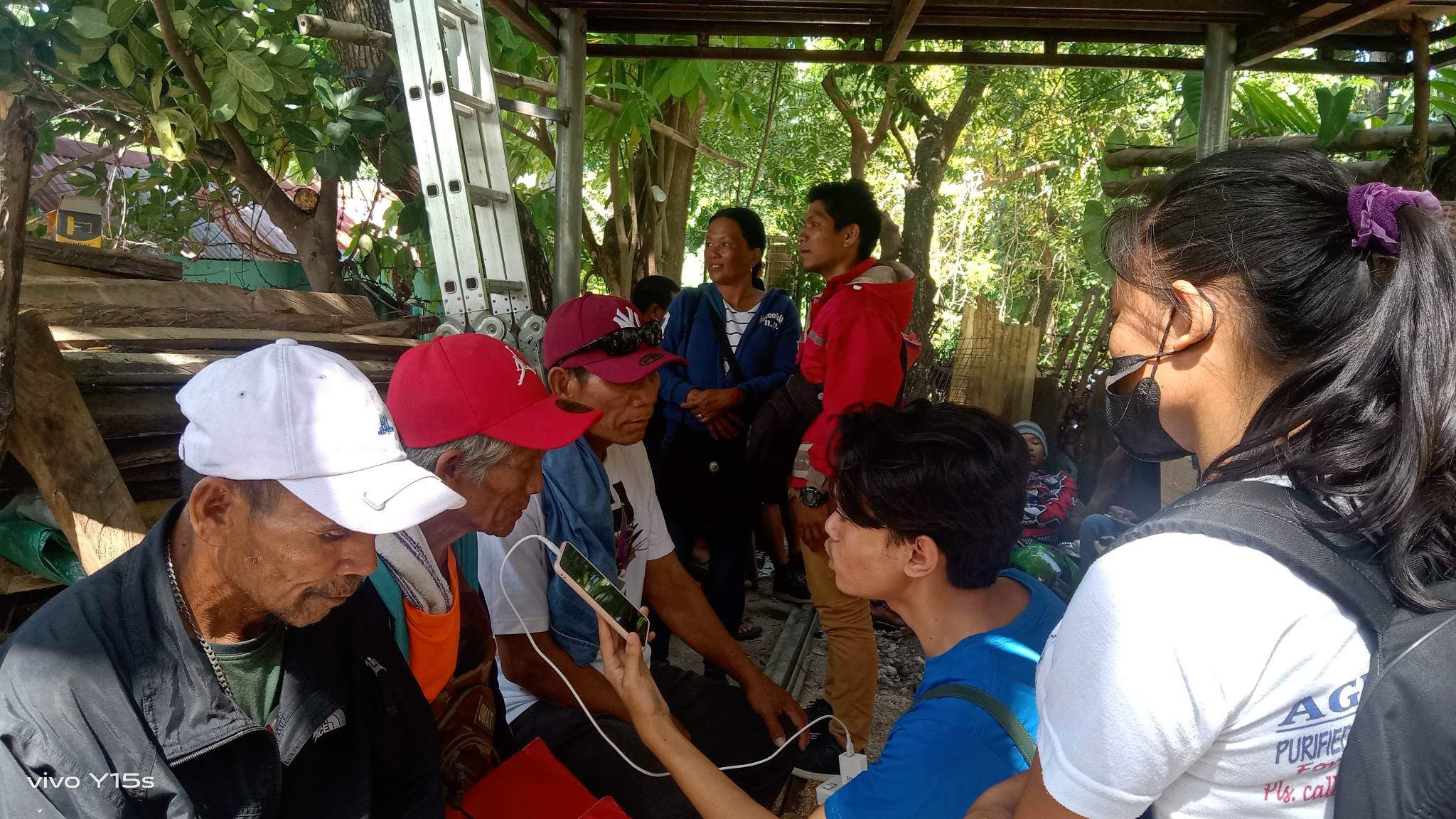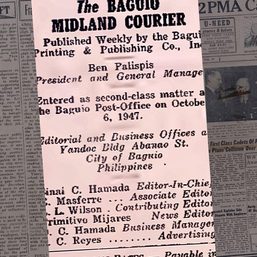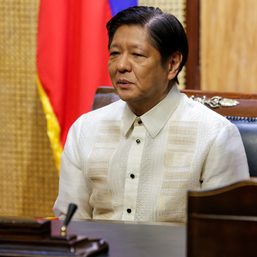SUMMARY
This is AI generated summarization, which may have errors. For context, always refer to the full article.

CEBU, Philippines – Many stories of atrocities and abuses against farmers, union organizers, and students in Cebu province during the Martial Law era remain untold, researchers of activist archival group Project Guinta told Rappler on Tuesday, March 28.
“A lot of stories were never told. They were never even publicized,” Karl Patrick Suyat, a co-founder of the project, told Rappler after spending a dozen days in the Central Visayas province.
Project Gunita is an initiative that aims to digitize documents and stories that would contribute to fact-finding efforts related to the Martial Law era.
Suyat said their team visited areas in Cebu to meet Martial Law victims willing to share their stories.
The team wrapped up their task with this realization: “There is so much more ground to cover.”
One of the most intriguing and emotional stories involved more than 20 farmers tortured and accused of being members of the New People’s Army.
The farmers came from Asturias, Balamban, and Danao City.
“They were arrested. Their parents were murdered, and they were tortured in detention during the Marcos dictatorship,” Suyat said.
The young archivist explained that Cebu-based opposition newspapers had reported on the farmers’ arrest, detention, and trial. The Freeman, The Republic News, and other publications almost had daily reports.
“But the stories of the killings of their parents, also farmers, never came out,” Suyat said. “I do not remember reading these particular stories even from the trove of archival material that we have.”
The researchers also skimmed clippings of the Balamban rebellion case but found no mention of torture.
“It was all just about the trial for rebellion, the Presidential Commitment Order (PCO) handed down on them to ‘legalize’ their arrest, and their eventual release,” Sutyat said.
No compensation
One of the known cases, Suyat said, was the murder of Regino Laurente, a farmer whom the military tagged as a rebel. Soldiers shot him dead in front of his children on June 10, 1982.
The Project Guinita team also interviewed some people who had filed claims with the Human Rights Victims’ Claims Board (HRVCB) but did not receive any compensation. Suyat said the release details need to first be consulted with lawyers.
Only 11,103 victims were able to receive compensation out of 75,749 applicants. That’s less than 15% of all complainants.
Due to a sunset clause in Republic Act No. 10368, the HRVCB ceased operations in 2018 and will no longer be providing compensation to victims who did not get accepted in the final list of recipients.
Still, the Cebu farmers were hopeful that the researchers would help bring the stories to the government, and that officials could be moved to give them their compensation.
“One of the farmers we interviewed, sabi niya, maraming salamat po at kayo ang tulay namin na maiparating sa pamahalaan na marecognize ang claim namin (he said, thank you so much for being our bridge to the reach the government for our claims to be recognized),” Suyat said.
Not only in Manila
“We really want to dismantle and to debunk the sentiment that the EDSA revolution was only a Metro Manila issue,” Project Gunita co-founder Sarah Gomez told Rappler.
During their fieldwork, Gomez and her team met a handful of Cebuanos who still remember local events leading up to the death of Ninoy Aquino.
This included Cebu’s own First Quarter Storm—a period described as a series of massive protests against the administration in the early parts of 1970.
Gomez shared how they encountered a water vendor along Osmeña Boulevard (not named for his safety) who recalled the names of activists and personalities like Father Rudy Romano and Nenita Cortez Daluz or “Inday Nita” who were a huge part of the anti-Marcos movement.
“He knew that there was a dictator; he knew that it wasn’t a good form of governance, and that it was necessary to take him (Marcos) out of the position,” Gomez said.
They were also able to meet two former members of Samahang Demokratiko ng Kabataan (SDK)—one of the major militant student organizations during the First Quarter Storm.
Suyar said the former SDK members identified issues like tuition fee increases, repression by the school administration, and calls for campus press freedom as the main reasons for early student protests. That was, until the rise of the Marcos dictatorship.
After the declaration of Martial Law, many students went “underground” and become part of the Anti-Marcos movement in Cebu.
“There were martyrs as well, one of them was Ramong Doong,” said Suyat.
Doong was a 17-year-old student at the Cebu Institute of Technology (CIT) when he was shot dead during a protest on October 22, 1970.
For many Cebuanos, the August 23, 1983 murder of Ninoy Aquino was the tipping point.
“They were waiting for his return, tapos pagkalaman nila na pinatay (and then, when they learned that he was killed), they were all grieving,” Suyat said.
The young researchers said a small underground leftist movement in Cebu’s countryside grew after the Ninoy Aquino assassination.
Make them remember
The former opposition center, however, delivered the highest number of votes for President Ferdinand Marcos Jr. in the May 2022 elections. Cebuanos gave the dictator’s son and namesake 1,515,812 votes – almost half the province’s 3.2 million registered voters.
The researchers stressed the need to uncover and share the stories of Martial Law victims not just in Cebu, but also in other provinces as well.
“Even if that’s a story of a politician who got disgruntled with the dictatorship or the story of farmers who got brutalized by the forces of the dictatorship, we have to tell them one by one again,” Suyat said.
Gomez noted the need to present historical facts as a series of compelling stories.
“There has to be a way for us to make it feel like a universal experience,” Gomez said.
If you are interested in helping Project Gunita, press this link.
-Rappler.com
Add a comment
How does this make you feel?







![[OPINION] Raised on radio](https://www.rappler.com/tachyon/2024/04/raised-on-radio.jpg?resize=257%2C257&crop=396px%2C0px%2C720px%2C720px)
![[Just Saying] Marcos: A flat response, a missed opportunity](https://www.rappler.com/tachyon/2024/04/tl-marcos-flat-response-april-16-2024.jpg?resize=257%2C257&crop=277px%2C0px%2C720px%2C720px)



![[OPINION] From ‘Puyat’ to ‘Tulog’: Clout-chasing street signs disrespected history](https://www.rappler.com/tachyon/2024/07/gil-puyat-july-26-2024.jpg?resize=257%2C257&crop=389px%2C0px%2C1080px%2C1080px)


![[Time Trowel] Yamashita gold is a myth, and treasure hunting is not archeology](https://www.rappler.com/tachyon/2024/06/myth-yamashita-treasure-june-14-2024.jpg?resize=257%2C257&crop=435px%2C0px%2C1080px%2C1080px)
There are no comments yet. Add your comment to start the conversation.